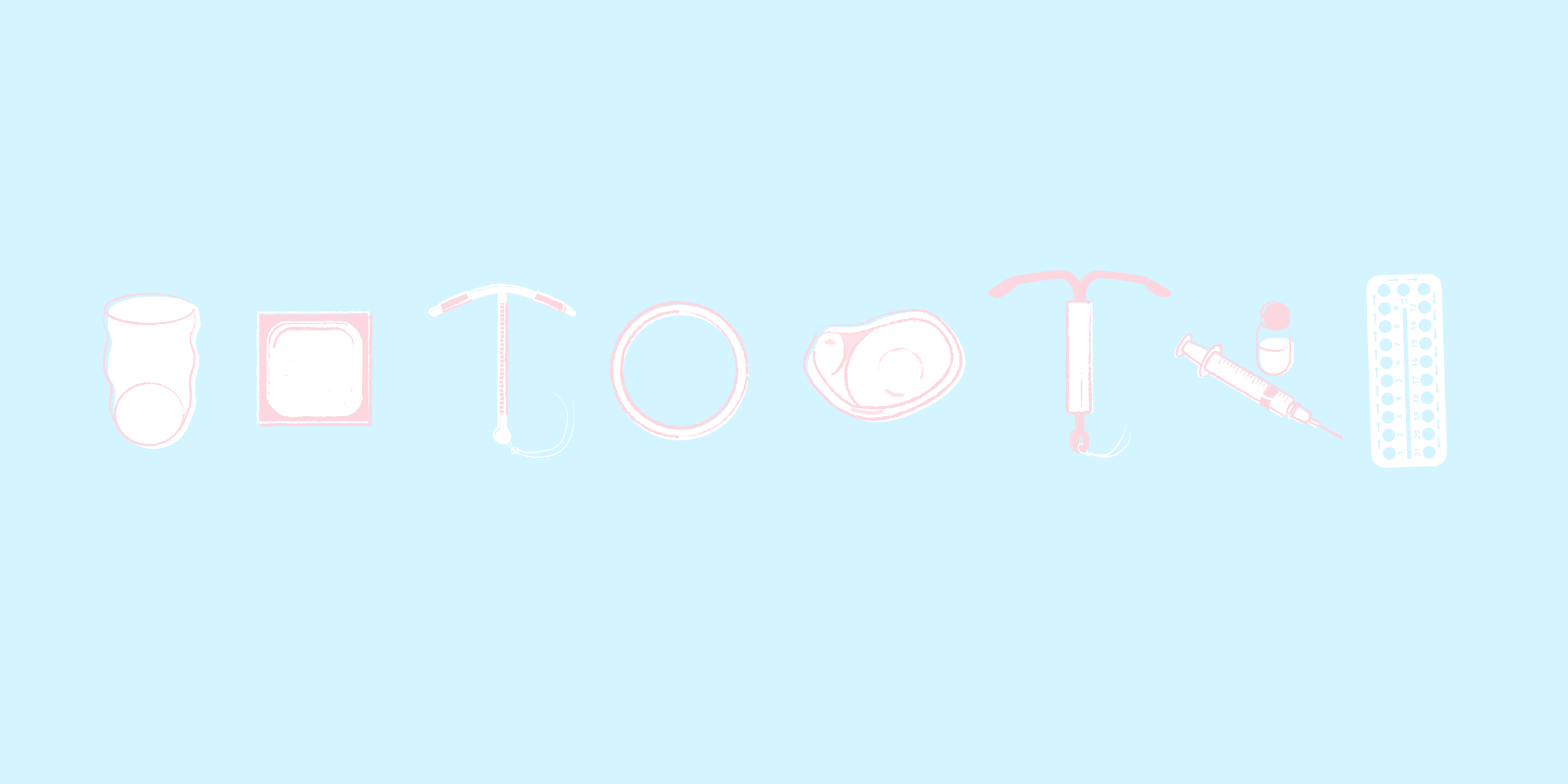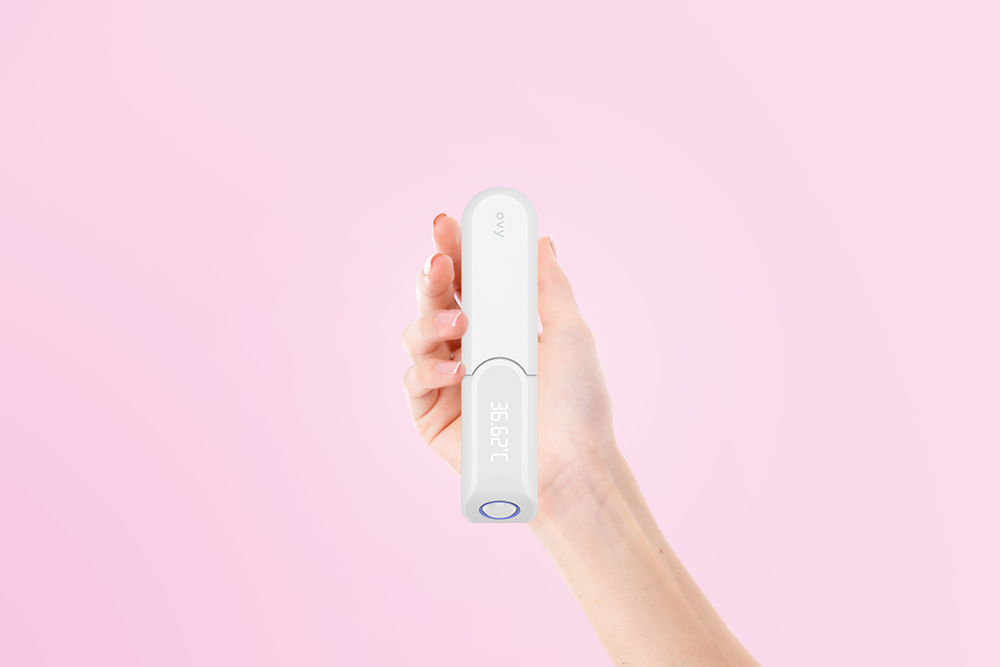Key Takeaways
- The menstrual cycle plays a central role in many people's lives. In this article, you will learn all about the biological basis of the menstrual cycle and how it changes from puberty to the menopause.
- We shed light on the factors that influence menstruation and how you can deal with menstrual cramps.
- We also explain how cycle tracking can help you to better understand your body and make informed health decisions.
The menstrual cycle is a fascinating process in the lives of those who menstruate. This natural process, governed by the interplay of various hormones in the body, influences not only fertility but also overall well-being. Understanding one's own cycle patterns can significantly contribute to better body awareness and more informed health decisions. In a world where knowledge about one's body is increasingly seen as a key to self-determination, education about the menstrual cycle is invaluable.
In this article, we will delve into the biological foundations of the menstrual cycle and explain how it changes from puberty to menopause. Additionally, we will explore the factors that can influence menstruation and how to manage menstrual discomfort. We will also focus on cycle tracking, a useful tool for those who want to better understand their menstrual cycle and its impact on their daily life. Our conclusion offers final thoughts and advice on how to consciously engage with the menstrual cycle.
The Biological Foundations of the Menstrual Cycle
Development and Function of the Endometrium
The endometrium, the lining of the uterus, plays a crucial role in the female reproductive system. It undergoes cycles of growth, shedding, and renewal that are associated with the menstrual cycle. This layer consists of several strata and different cell types, each fulfilling specific functions. The functional layer of the endometrium is built up during the cycle and shed if fertilization does not occur. It contains glandular tissue and blood vessels essential for nourishing a growing embryo should pregnancy occur. The basal layer remains constant as part of the uterine wall and forms the basis for rebuilding the functional layer after each menstruation.
Epithelial and glandular cells are responsible for secreting fluids and molecules important for nourishment and fertilization. Stromal cells in the endometrium support these functions and play a key role in modulating the immune response. The main task of the endometrium is to create and maintain an optimal environment for the implantation of a fertilized egg.
Hormonal Regulation
The menstrual cycle is controlled by a complex interaction of hormones produced by different parts of the body. Estrogen and progesterone, mainly produced by the ovaries, play a central role in this process. Estrogen is responsible for the growth and proliferation of endometrial cells during the proliferative phase, which follows the menstrual phase. After ovulation in the middle of the cycle, progesterone levels rise, preparing the functional layer of the endometrium for the possible implantation of a fertilized egg.
The pituitary gland also plays an important role by releasing luteinizing hormone (LH) and follicle-stimulating hormone (FSH), which promote ovulation and stimulate the production of estrogen and progesterone in the ovaries. These hormones also cause changes in other parts of the body, such as preparing the breasts for a possible pregnancy.
Overall, the hormonal regulation of the menstrual cycle is crucial for reproductive health and general well-being. Understanding these processes can help women better understand their bodies and make more informed decisions about their health and fertility.
From Puberty to Menopause: The Phases of Life
First Menstruation
Menarche marks the onset of puberty in girls and typically occurs between the ages of 10 and 16. However, this first menstruation is often not associated with an ovulatory cycle, as the initial periods are usually anovulatory, meaning they occur without prior ovulation. A regular ovulatory cycle usually develops after about one and a half to two years. Hormonal development and reaching a certain body fat percentage (>17%) play a crucial role in the onset of puberty.
Pregnancy and Postpartum Changes
Following a pregnancy, a phase known as the puerperium occurs, lasting about 6 to 8 weeks. During this time, the woman's body regenerates and adjusts to postnatal changes. Immediately after childbirth, the mother is carefully monitored to detect and treat any complications. The uterus begins to contract and gradually returns to its original size, a process supported by breastfeeding and the associated release of oxytocin. Psychological adjustment is also significant, as some women may experience postpartum depression or the so-called baby blues.
Perimenopause and Menopause
Perimenopause marks the end of the fertile phase of a woman and typically begins around the age of 47.5. During this time, ovarian function gradually declines, leading to irregular menstrual cycles. The final transition to menopause is reached when there has been no menstruation for a year. During this phase of life, it is important to continue using contraceptive methods, as pregnancies can still occur until menopause is reached. Hormonal changes, particularly a decrease in estrogen production, can lead to various symptoms, such as hot flashes and mood swings.
Factors Influencing Menstruation
Nutrition and Physical Activity
Adjusting training and nutrition to the different phases of the menstrual cycle can significantly impact health and well-being. During the follicular phase, when estrogen, progesterone, FSH, and LH levels are low, metabolism is in an anabolic state, ideal for muscle building. Intense endurance and strength training should be performed during this phase, as physical performance tends to be higher. During the luteal phase, dominated by progesterone, thermoregulation is more challenging, so training intensity should be reduced, focusing on less strenuous exercises to minimize the risk of injury.
Stress and Emotional Strain
Stress significantly impacts the menstrual cycle through the activation of the hypothalamic-pituitary-adrenal axis, leading to increased cortisol and CRH levels. These hormones can suppress the production of reproductive hormones, leading to anovulation or amenorrhea. Particularly traumatic experiences, such as war or family separation, can lead to dramatic changes in the menstrual cycle, including amenorrhea. Additionally, emotional and sexual abuse has been associated with premenstrual syndrome (PMS) and premenstrual dysphoric disorder (PMDD). Chronic stress can also lead to cycle disorders, such as shortened or prolonged menstruation and increased menstrual pain, highlighting the importance of stress management and supportive work environments.
Managing Menstrual Discomfort
Pain Relief
Abdominal pain during menstruation can be effectively treated with various methods. Local heat applications, such as hot water bottles or heating pads, are widely used to promote blood flow, quickly transport inflammatory mediators away, and provide oxygen and nutrients to the painful tissue, leading to relief from cramps in the lower abdominal muscles. Acupressure, by applying targeted pressure to specific trigger points, can also relieve pain and bring the body into balance.
Natural remedies, such as teas and oils from medicinal plants like chamomile, yarrow, and lady's mantle, are traditional approaches used for generations to relieve pain.
Helpful Habits and Practices
A balanced diet rich in essential minerals and vitamins supports the body not only generally but can also prevent menstrual discomfort. Foods rich in magnesium, potassium, iron, and omega-3 fatty acids should be preferred as they have anti-inflammatory properties and promote muscle relaxation. Regular exercise can also promote blood circulation and stimulate the release of endorphins, providing natural pain relief and mood enhancement.
Relaxation techniques and stress management are essential to keep the body and mind in balance. Regular meditation, yoga, and deep breathing can help lower stress levels and reduce the intensity of menstrual discomfort. It is also important to stay hydrated to support overall body function and alleviate cramps.
In summary, the combination of proven home remedies, adjusted diet, and a healthy lifestyle is an effective strategy for relieving menstrual discomfort.
Conclusion
By deepening the understanding of the menstrual cycle, its biological foundations, and the various factors that can influence it, it becomes clear how important individual knowledge is for each person. This awareness not only allows for better understanding of one's body and its changes throughout life but also enables appropriate measures to promote well-being and relieve discomfort. Engaging with the topic of the menstrual cycle thus contributes significantly to increased quality of life and health literacy.
In conclusion, it is important to emphasize that consciously engaging with and tracking one's menstrual cycle brings numerous benefits, from targeted pain relief to optimizing one's lifestyle. It not only opens the way to a better understanding of one's body but also promotes a healthy balance in daily life. Given the individuality of each menstrual cycle, personal experiences and needs should always be at the forefront to adequately address both physical and emotional aspects.
Medically Reviewed
This text was created by medical editors on the basis of specialist medical literature and current studies. Our aim is to work scientifically, identify sources and regularly check that the content is up to date.
References & Literature
- Bertone-Johnson, E. R., Whitcomb, B. W., Missmer, S. A., Manson, J. E., Hankinson, S. E., & Rich-Edwards, J. W. (2014). Early life emotional, physical, and sexual abuse and the development of premenstrual syndrome: a longitudinal study. Journal of Women’s Health, 23(9), 729–739.
- Girdler, S. S., Leserman, J., Bunevicius, R., Klatzkin, R., Pedersen, C. A., & Light, K. C. (2007). Persistent alterations in biological profiles in women with abuse histories: influence of premenstrual dysphoric disorder. Health Psychology, 26(2), 201.
- Kalantaridou, S. N. et al. (2004). Stress and the female reproductive system. Journal of Reproductive Immunology, 62(1), 61–68.
- Leitlinien der Deutschen Gesellschaft für Gynäkologie und Geburtshilfe Juli 2004, pro familia
- Neena B. Schwartz. (1974). The Role of FSH and LH and of Their Antibodies on Follicle Growth and on Ovulation. Biology of Reproduction, Volume 10, Issue 2, 1 March 1974, Pages 236–272
- Welt, C. (2021): Patient education: Absent or irregular periods (Beyond the Basics.)





